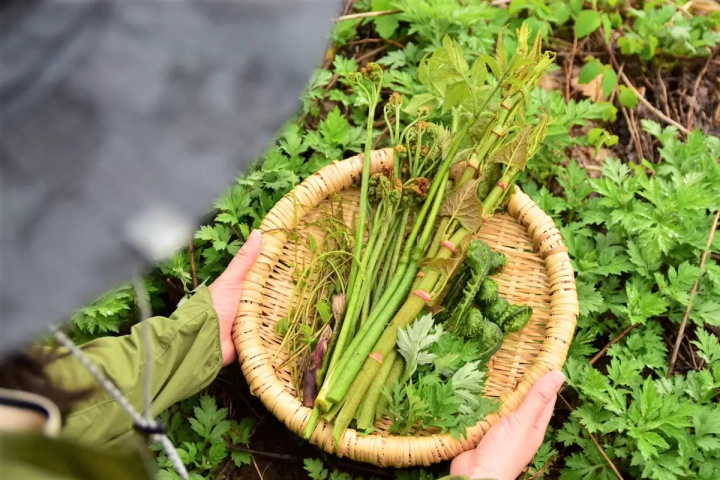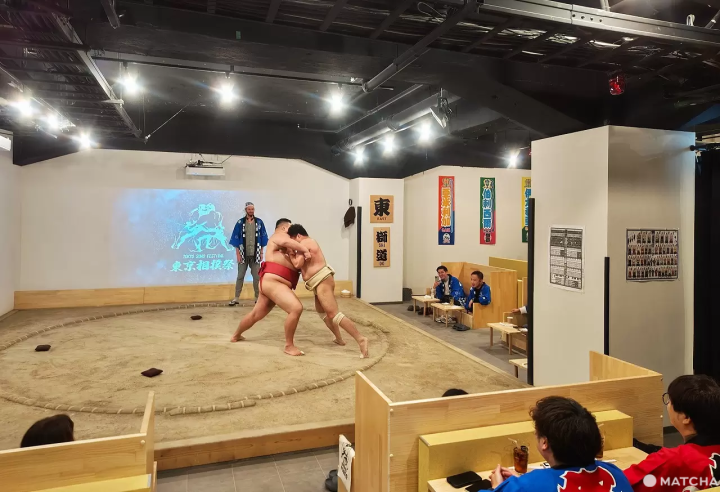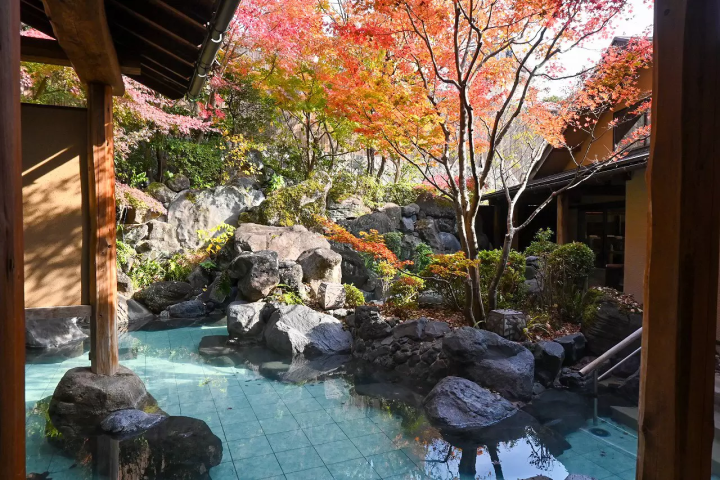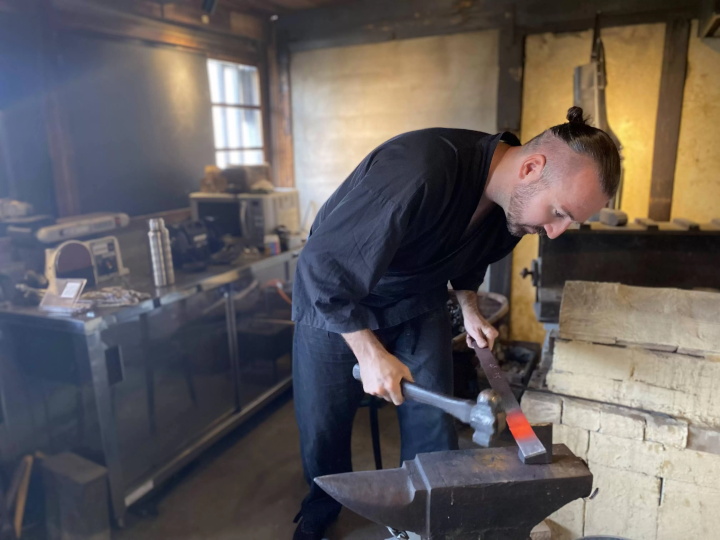"CRAFT TOURISM ECHIZEN" A Trip to Make Your Own One and Only Knife in the World

A trip to have people with various backgrounds feel the climate of Echizen City. This time, Mr. Kyohei Watamori and Ms. Arisa Shimizu, who live in Fukui Prefecture, will experience manufacturing in Echizen.
Takefu Knife Village
Echizen City is home to a variety of traditional crafts, but among them, the “Echizen Cutlery”, which is designated as a traditional craft, is loved by top chefs not only in Japan but also around the world because of its outstanding sharpness and beauty. doing.
The two are actually getting married soon. The main purpose of this trip is to make “the only one knife in the world”.
"Even though we are locals, there are many things we don't know about Fukui's traditional crafts," they said. Through the craftsmanship of "Echizen cutlery", it will be an opportunity to rediscover the charm of Fukui, the hometown of Fukui.
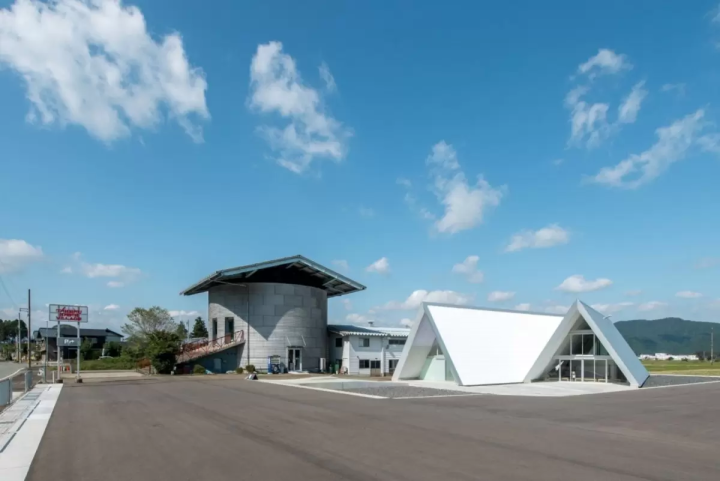
The first place we visited was Takefu Knife Village. It is a joint workshop where Echizen cutlery craftsmen gather, and you can enjoy a tour and hands-on experience of making cutlery. This time, in order to make a knife for the couple's new life, we will make an original knife while learning how to sharpen a knife from Yuji Totani, a traditional craftsman.
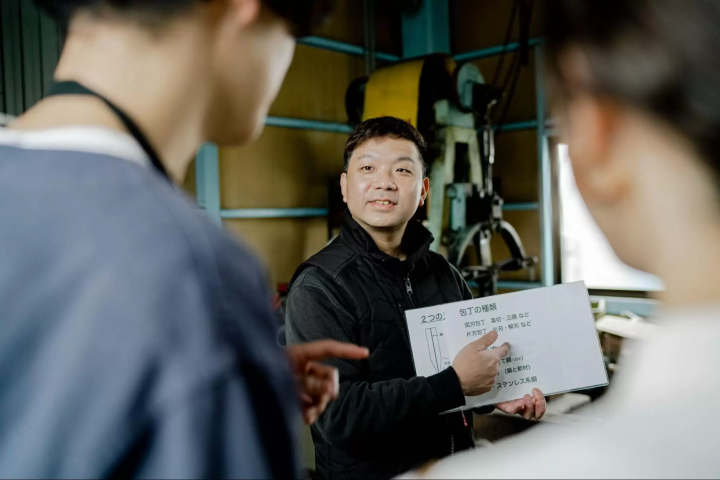
First, Mr. Toya will explain the structure and characteristics of the cutlery. Mr. Toya is a craftsman who handles sharpening, which determines the sharpness of cutlery. He is like a big brother among the craftsmen in the production area, and can be consulted frankly about the sharpness and maintenance of knives.
There are various types of kitchen knives, such as iron and stainless steel, and they all have different sharpness and characteristics. Stainless steel knives are commonly used, but due to their ease of handling, many people may continue to use them without sharpening them.
“If you can sharpen your own knives, you will be surprised at how sharp the knives are, and cooking will become even more fun,” says Toya. Now let's sharpen the knife.
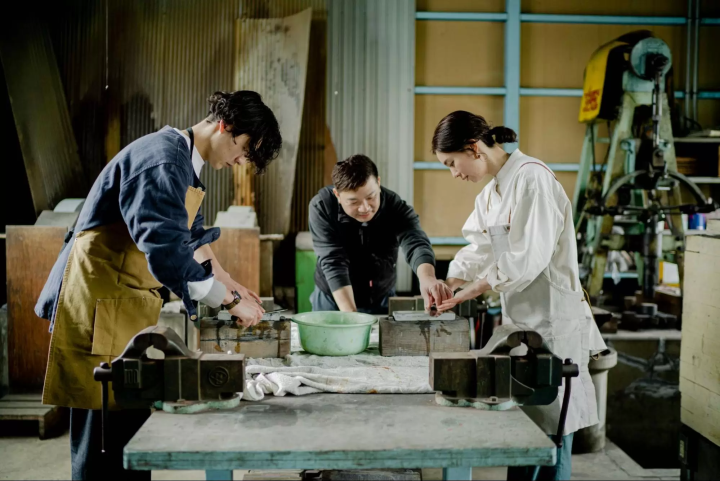
When sharpening a knife, hold the knife with your dominant hand and hold down the center of the blade as you sharpen. The point is to add water little by little and move the blade while pressing it against the whetstone.
It was the first time for the two to sharpen a knife, so although it was awkward at first, the sharpened part gradually became sharper, and the movement became smoother. The sharpening sound has become rhythmic.
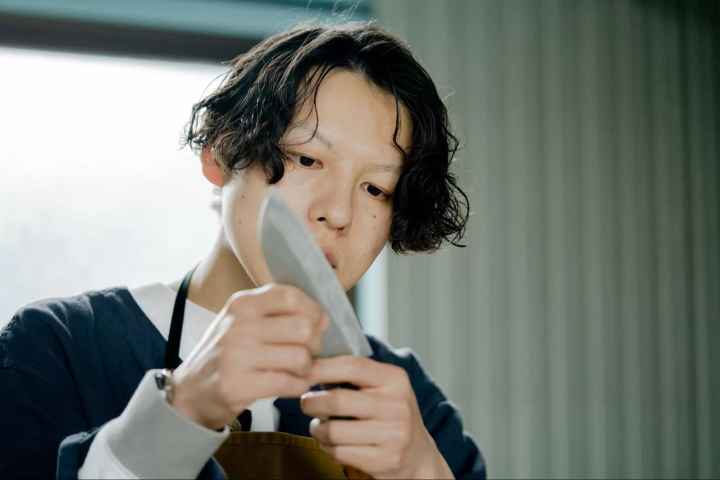
“Once I got the hang of it, it became fun,” says Kyohei. The look that stares at the edge of the blade is serious.
“The sharpening work can be a no-brainer, so it might be good when you want to prepare your mind.” Arisa is also polite and focused while facing the knife.
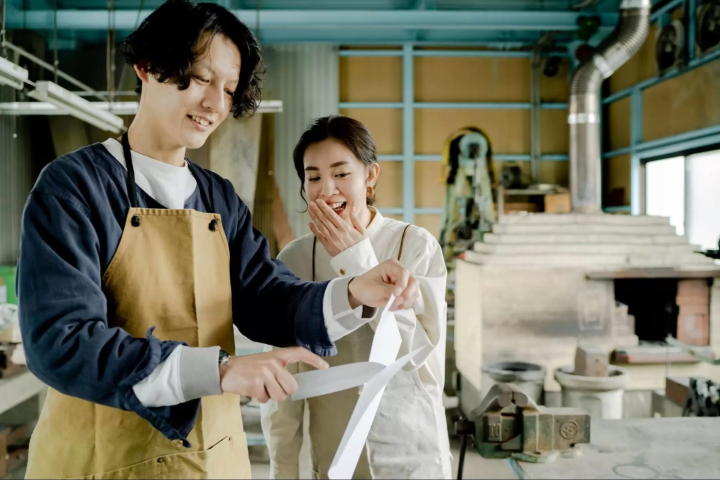
About 20 minutes of continuous sharpening. I will try the sharpness of the knife. When I hit the paper with a knife... even though I didn't apply any force, the paper slipped in half.
“You can cut it so beautifully!?” Arisa-san said with a surprised expression.
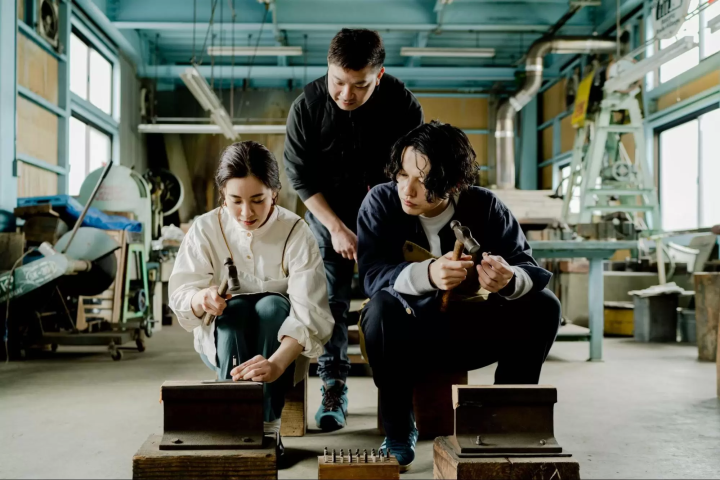
You can also engrave your favorite characters on the sharpened blade.
This time it's our own knife, so we decided to engrave each name. I'm going to focus on typing one character at a time.
Even if the letters are a little distorted, they are charming. Only one kitchen knife in the world, first of all the cutlery part is completed.
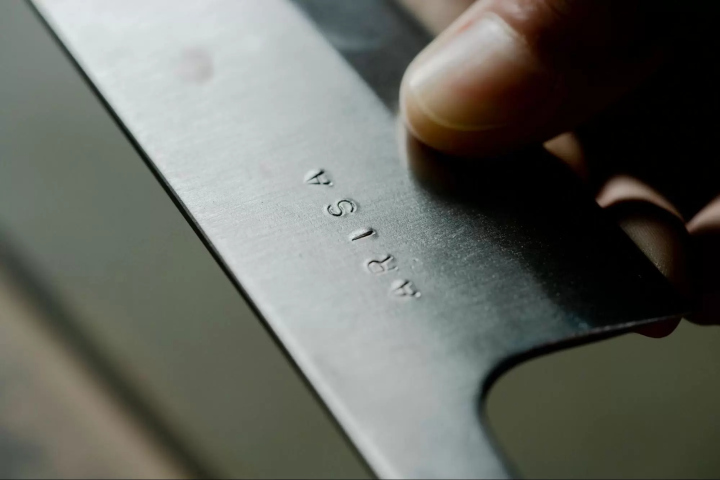
https://www.takefu-knifevillage.jp/
pattern and pattern
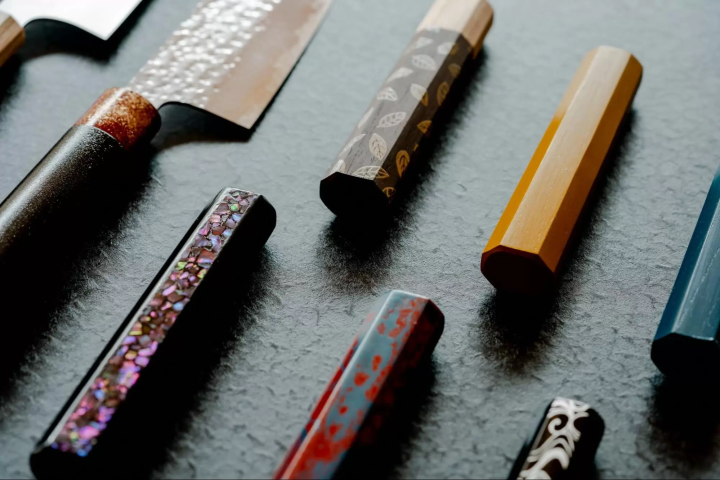
Next, I visited “Etoe”. A gallery and shop opened in September 2020 by Yamaken Woodworks, the only manufacturer in the prefecture specializing in knife handles.
Here, you can find one-of-a-kind kitchen knives, accessories, and small items that have been decorated with traditional Echizen lacquer lacquer lacquer lacquer lacquer ware.
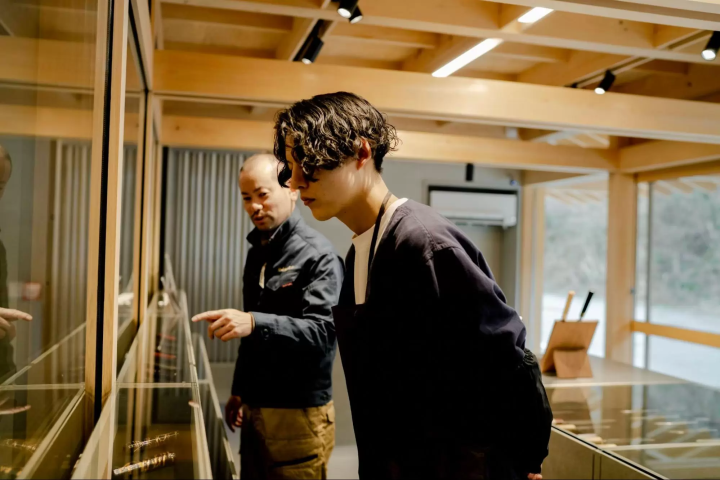
We asked Mr. Takuya Yamamoto, the fourth generation owner of Yamaken Woodworks, to show us around the gallery. Echizen cutlery and Echizen lacquerware, a collaboration between two crafts that has never been seen before. Mr. Kyohei was fascinated by the colorful and highly designed patterns that fused the techniques of traditional crafts.
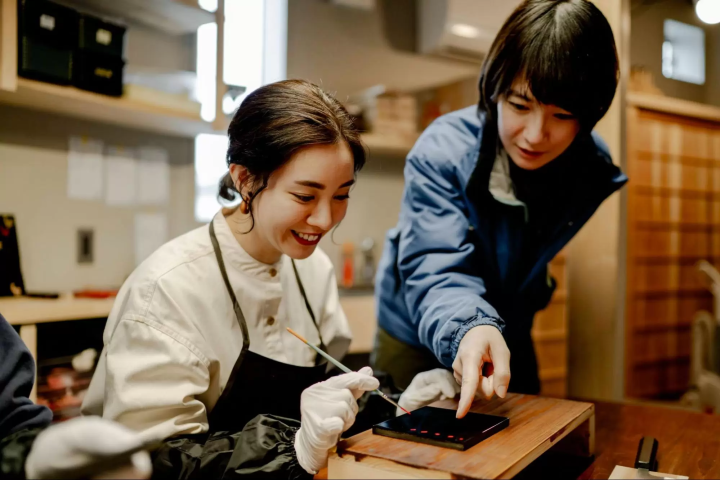
Here, the handles of the knives are painted with lacquer. Ms. Yuma Yamamoto, a maki-e master, teaches us. I studied lacquer art at university, and after graduating, I trained under a maki-e master in the Kawada district of Sabae City, the production area of Echizen lacquerware. After getting married, he joined Yamaken Woodworking Co., Ltd., where he creates various patterns using maki-e techniques.
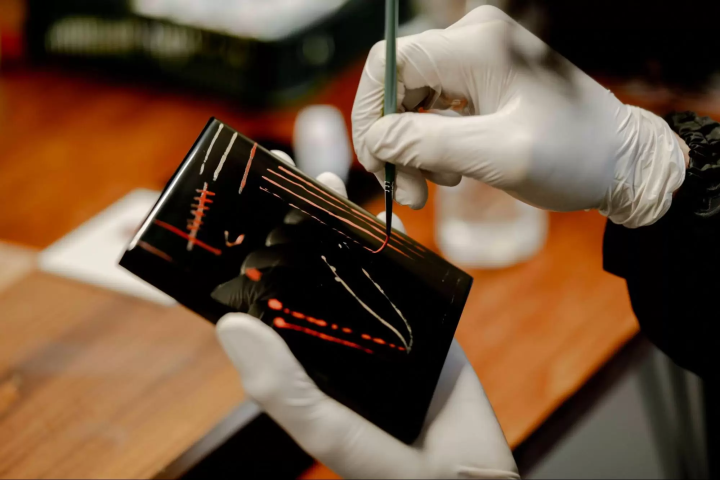
What kind of pattern should I use? It's a fun time to think about the design.
Before actually drawing on the pattern, first practice drawing lines with a thin brush. It looks easy, but with just a little force, the lines can become thick or faded. When you actually try it, you can see how difficult it is.
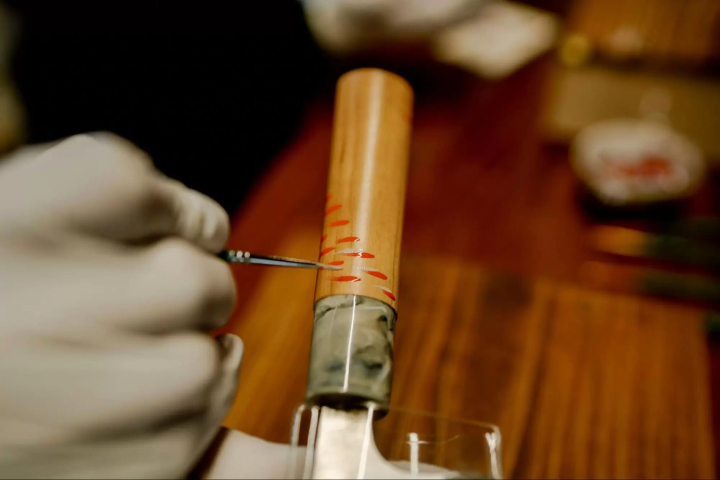
Kyohei used vermillion and white lacquer to create vertical striped patterns, and Arisa used her fingers to create random polka dot patterns. During the painting, Mr. Yamamoto will talk about Echizen cutlery and lacquer to deepen his understanding of crafts.
“It was the first time I learned that such amazing craftsmanship is alive and well in the area where we live,” says Arisa. The conversation blossomed and the time flew by.
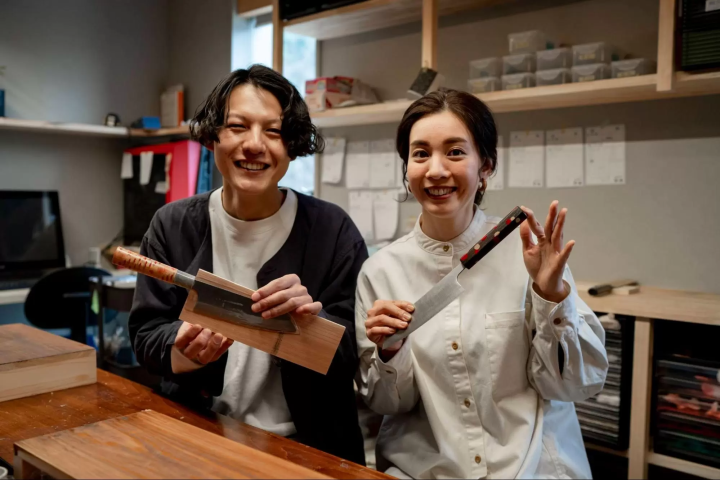
Once the blade sharpened at Takefu Knife Village is inserted into the handle, the only kitchen knife in the world is finally complete. The knives that I have sharpened and painted myself are very attached. The two personalities shine through.
“Now that I have my own kitchen knife, I think I should start cooking,” said Kyohei. Having my knife in hand may lead to a new hobby of cooking...
https://www.yamaken-japan.com/
Eiundo
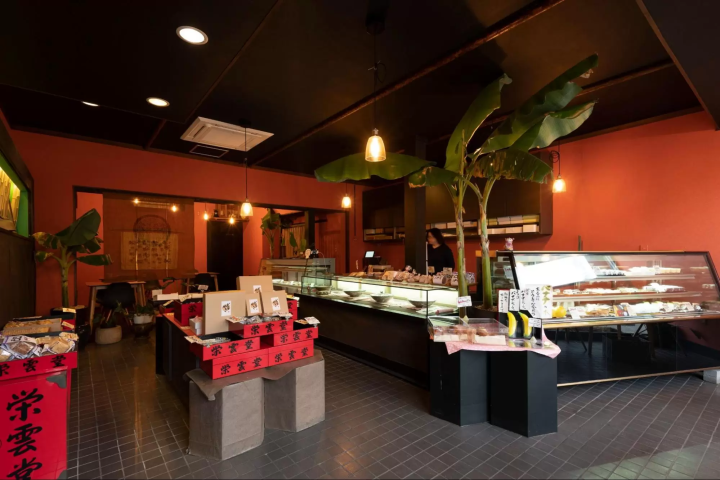
The two of them enjoyed making their own knives. The last place I came to take a break was Eiundo. In fact, Echizen City has many long-established Japanese confectionery shops. Eiundo also has a long history, having been established in 1899. The store always has nearly 30 to 50 different types of products, from standard Japanese sweets such as sakuramochi, chestnut kinton, and appetizer yokan to western sweets made with seasonal fruits. You can also enjoy eat-in.
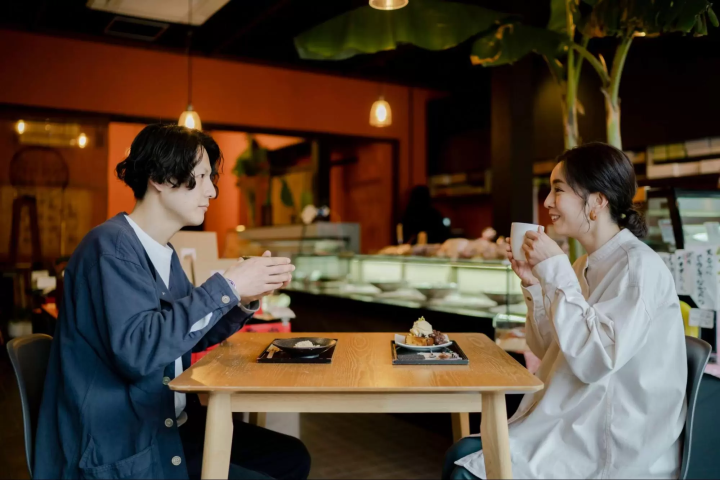
Kyohei relaxes with matcha and Arisa relaxes with coffee.
While looking back on the day, we talk about the time we spent with the craftsmen. "What kind of traditional crafts should I experience next time?"
https://www.echizen-tourism.jp/travel_echizen/food_detail/97?
Echizen wisdom ~Proposing a new tourism, a journey of wisdom.~ A town that has inherited the skills and spirit of its predecessors for 1,500 years. Echizen, the entrance to the "Koshi no Kuni" ruled by an ancient king. A place of wisdom where cutting-edge technology and culture first flowed in from across the Sea of Japan and became the origin of Japan's profound manufacturing. In the traditional industries that coexist with the nature of the land and in the people who live here, the universal wisdom that human beings want to bring to the next 1000 years is alive. Here and now, there is a future born from exchanges that transcend national borders and time and space. A new quest to find light. Welcome to Echizen.
The contents on this page may partially contain automatic translation.































